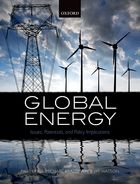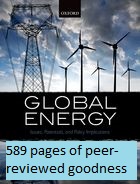Today, at the 2010 BIEE conference, I’ll be presenting a paper on how Denmark manages its wind variability, and some of the implications for its target of delivering 50% of its electricity from wind by 2025.
Here’s the abstract of the paper:
Abstract
Denmark is frequently held up as a case study of a grid successfully integrating a wind penetration of 20%. Conversely, claims are made that Denmark exports “most” or “almost all” of the electricity generated by its wind turbines, although more specific claims refer to 57%, 1% or 0.1% of wind power being exported.
Analysing hourly power data from 2000-2010, hourly price data from 2006-2010, and minute-by-minute data from the last twelve months, this paper critiques the methods behind each of these claims, and compares them to known features of electricity markets. Although electrons do not carry labels of origin, and a method to assign exports to specific generation sources will carry some subjectivity, it is possible to put some meaningful limits on such claims about exports.
Based on that analysis, the paper then assesses the likely impact on exports of Denmark’s proposal to move to 50% wind penetration. Mixed-economy market structures and infrastructure options are set out that will enable such penetrations to be manageable, while minimising need for curtailment of wind production, and without increasing the likelihood of loss of load.
Download the paper on how Denmark manages its wind variability from this link.

